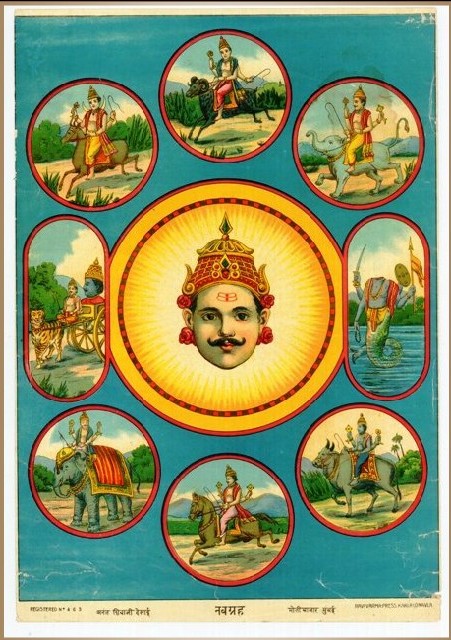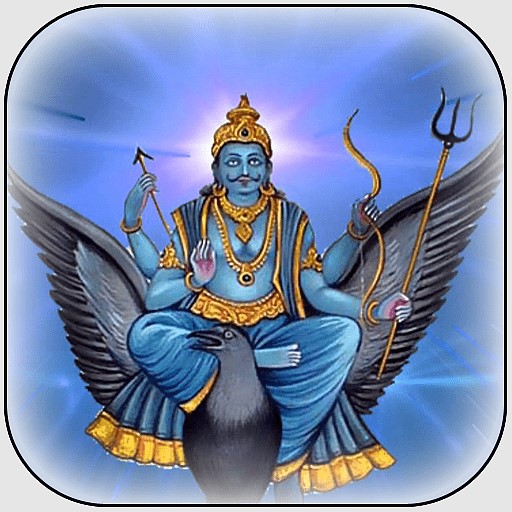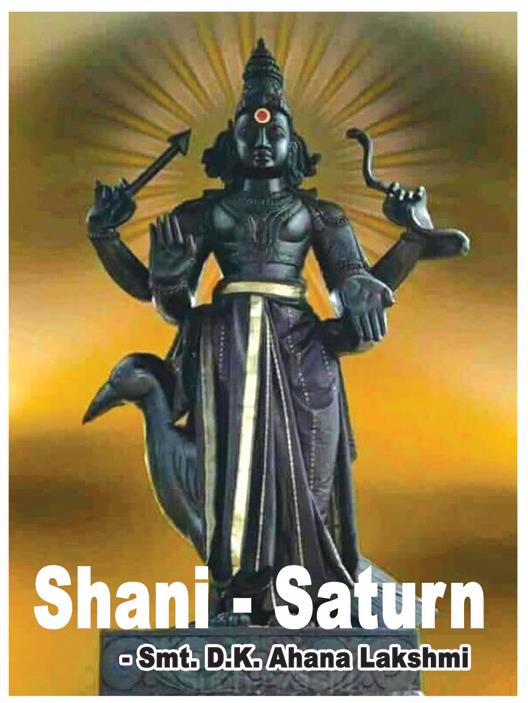Suryascandro mangalasca budhascapi brahaspati
Sukrahsaniscaro rahuh ketusceti navagrahah ||
Navagraha – Celestial influencers
Sun, Moon, Mars, Mercury (Budha), Jupiter Venus, Saturn (Shani), Rahu, and Ketu are the nine planets.
When you are in a remote village and look at the sky at night without the light pollution of the cities, you become aware of the shining stars (and may even recognize the zodiac formations) in the Milky Way overhead. At certain times of the year, you become very aware of certain glowing bodies and feel that they are reaching out to you.

Our ancients counted five of these that were very visible to even the naked eye along with the sun and moon and the two shadow planets, rahu and ketu, as the nava grahas or nine planets. The planetary positions at the time of a child’s birth are believed to influence the child’s destiny.
Thus, the Navagrahas may be considered celestial influencers. It was believed that living beings pass through the periods and positions of these nine and hence, the hardships in life were linked to the position of the grahas. Remedial measures or pariharas to overcome any adverse effects due to the planets were also suggested.
It is not surprising therefore that the worship of these nine celestials has prevailed through the ages with stories about them appearing in various Puranas.
Why! Even the seven days of the week are named after them! Thus we have
- Ravivaram (Ravi = Sun),
- Somavaram (Soma=Moon),
- Mangalvaram (Mangal=Mars),
- Budhavaram (Budha=Mercury),
- Brihaspativaram or Guruvaram (Brihaspati/ Guru= Jupiter),
- Sukravaram (Sukra=Venus) and
- Shanivaram (Shani=Saturn).
Worship of the navagrahas is pan-Indian though the way of worship may be different. In many places, they are carved on the roof of many temples. Temples dedicated to Navagrahas are few. Around Tamil Nadu’s Kumbakonam, there are nine temples, each dedicated to one of the nine grahas and hence they are collectively known as the Navagraha temples.
On the other hand, in many Shiva temples in south India, especially in Tamil Nadu, there is a shrine exclusively dedicated to the navagraha, usually to the northeast of the sanctum. The nine celestial influencers are usually placed on a square pedestal, about three feet off the ground. Surya, the sun, takes the central position, facing east, and the other eight deities are placed around Surya with no two facing each other.
Each graha faces one of the four directions, the specific direction being defined by the pratishta (e.g. Agama or Vaidika) followed by the temple. In general, the navagrahas are to be worshipped after worshipping the main deity.
No wonder Purandaradasa sang ‘Sakala Graha Bala Neene Sarasijaaksha’- O lotus-eyed, you wield power over all the planets You pervade the universe as its protector You are the sun, moon, mercury; you are Rahu, ketu You are Venus, Jupiter, Saturn, and Mars.
Navagraha Homam
is performed to strengthen beneficial grahas and pacify maleficent grahas for the removal of obstacles from one’s personal or even professional life. The nine planets are invoked by chanting the navagraha stotram and shanti mantras and offering nine types of grain, vastra, and naivedya.
Shanivaram (Shani = Saturn)
The word ‘Shani’ has the power of putting fear into anyone. It is believed that he is the god of justice keeping a record of a person’s deeds and passing judgements even during their lifetime, unlike his brother Yama who only does so after one passes away. The son of Lord Surya and Chaya Devi, Shani Bhagavan is dark-complexioned, prefers black garments, and rides a black crow.

Shanivar is the seventh day of the week, and Shani is the overlord of the day. It corresponds to Saturn’s day or Saturday. Astronomically, Saturn is the second largest planet in the solar system, a gas giant with a spectacular ring system.
Shanaischara
The sixth from the sun, it moves slowly taking 29 Earth years to make one orbit around the sun. Interestingly, Shani Bhagavan is referred to as ‘Shanaischara’, the slow mover, as he moves with a limp. Saturn’s transit from one Zodiac sign to another is observed as ‘Sani peyarchi’ festival and is held once in two and- a half years.
When we think of Shani Bhagawan, we always think of his maleficent or evil aspect but Muthuswami Dikshitar points out that Shani Bhagavan has twin aspects.
He is bold and fearless bringing all types of people under his control, but he does not necessarily trouble and frighten everyone for no reason.
The kirtana in Yadukulakamboji raga begins as follows:
“Divakara tanujam shanaishca ramdhirataram santatam cintayeham” –
I meditate on the slow-moving Shani, the son of Surya, and the courageous one. Dikshitar describes him as dayasudha sagaram, the ocean of compassion who loves lamps lit with sesame (til) oil and rice with sesame seeds tilathaila misritha anna deepapriyam.
These, along with black clothes are offered to Shani Bhagavan on Saturdays.
Sri Dharbaranyeshwara Swamy – Tirunallar
Tirunallar in Karaikal district of Puducherry is well-known as Sri Saniswara Bhagavan sthalam. The presiding deity is Sri Dharbaranyeshwara Swamy. It is said that King Nala was freed from the clutches of Shani when he bathed in the theertham and worshipped there.
Google Maps Location of SHRI DHARBARANYESWARASWAMY DEVASTHANAM (Shri Saneeswarabagavaan SthalamThirunallar)
Hence the belief bathing at the Nalatheertam and worshipping at this temple gives relief to those afflicted by the influence of Saturn.
In Andhra Pradesh,
- the Mandeswara (Saneeswara) Swamy temple in Mandapalli,
- East Godavari district is well-known and so is Shingnapur in Maharashtra.
Shani Sthalam
Among the Nava Tirupatis, the Srinivasa Perumal temple (also known as Sri Mayakoothar temple) located in Perungulam along the Tirunelveli- Tiruchendur route is known as Shani sthalam.
Hanuman
In Chengalpattu near Chennai in Tamil Nadu, there is a shrine to Lord Hanuman in the Kodanda Rama temple. Here Hanuman is seen with his feet on Shani Bhagavan. The legend is that Shani was sitting on Hanuman’s head and was getting crushed by rocks that Hanuman was carrying; he let go to grab Hanuman’s feet and got caught under them.
Another legend is that Hanuman released Shani from Ravana’s captivity.
Whatever the reason, it is believed that devotees of Hanuman are protected from Saturn.
Navagrahastotra
There are several mantras and slokas praising Lord Shani like
- Shani Kavach,
- Shani Gayatri Mantra,
- Shani Moola Mantra,
- Shani Sloka, and
- Shani Beeja Mantra.
Let us recite the navagrahastotra dedicated to Shani Bhagavan
Nilamjana samaabhaasam
raviputram yamaagrajam |
Chaaya maartanda sambhutam
tam namaami sanaischaram ||
Midnight-blue-hued, son of Sun and elder brother of Yama. Born of Chaya and Sun, I pray to thee, of slow gait.
Data Source – Article posted by Smt. D.K. Ahana Lakshmi in Sapthagiri Magazine.

